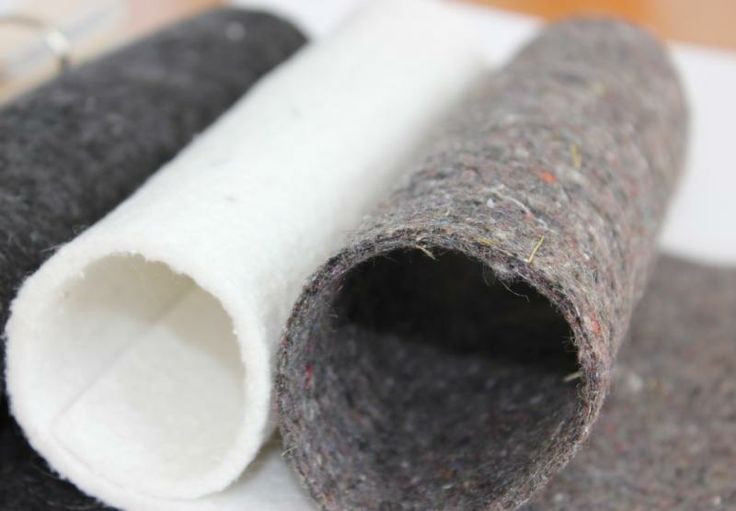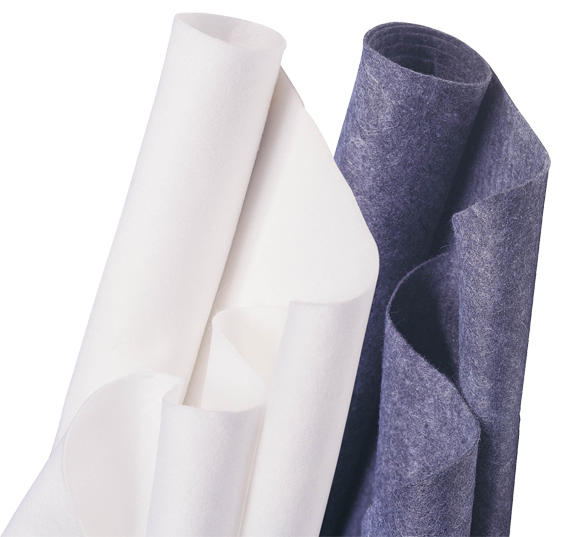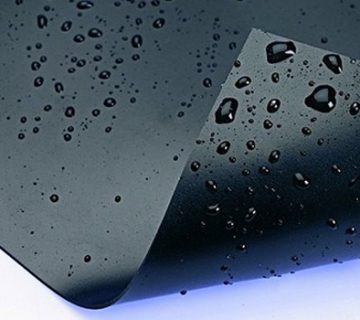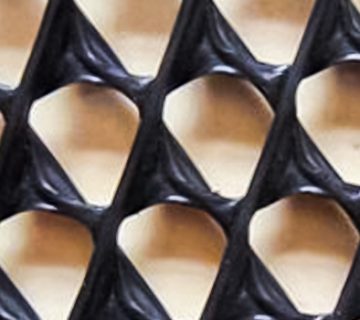

Geotextiles are divided into two according to the production technique;
- Nonwoven Geotextiles:It is a nonwoven (manufactured from unidirectional or randomly arranged fibers) layer, net or felt, in which polyester and/or polypropylene fibers are combined by needle punching method in order to provide economical and permanent solutions in civil engineering and especially soil mechanic problems. It is the most commonly preferred type of geotextile.
- Woven Geotextiles:They are woven geotextiles used when high tensile strength is required. Woven geotextiles produced from various polymer materials (polypropylene, polyester, etc.) show high strength at low elongations, as they are produced by utilizing all the technical advantages of yarn. Even though the yarns are woven in two directions at right angles to each other, the material exhibits significant diagonal strength due to friction and winding between the yarns.
Functions;
- Reinforcement: Thanks to its high resistance and high friction coefficient on the earth layer, by taking a portion of the load on the soil on itself, it provides a more uniform weight distribution over the surface. Thus, deformations as dispersion, cracking, and collapse are prevented.
- Separation: As a result of the continuity, flexibility, permeability, and resistance to high tensile forces, geotextiles separate two soil layers with different geotechnical properties without interfering with the natural circulation of water.
- Protection: Geotextile provides the desired protection on the material by reducing or spreading the deformation and stress.
- Filtration: Geotextile allows the passage of water and prevents the passage and dragging of the soil with the smallest grain diameter. Thus, it acts as a filter.
- Drainage: The geotextile transmits the liquid or gas along its plane to the desired outlet, especially when they are porous and provide sufficient slope. During this transmission, the liquid or gas is collected within the geotextile and transferred within its own plane.
Application Areas;
-
- Building Foundation Waterproofing
- Road and Highways, Bridges, Viaducts
- Tunnels and Railways
- Engineering Structures
- Sport Arenas
- Parking Areas
- Airports
- Mine Heap Leach Facilities
- Mine Tailing Storage Facilities
- Mining Solution Ponds
- Sediment Ponds
- Landfills
- Ash Monofil Hazardous Waste Landfills
- Hazardous Waste Storage Ponds
- Thermal Power and Bioenergy Facilities
- Oil and Petrochemistry Facilities
- Sewage Treatment Facility
- Sewage Lagoons
- Evaporation and Brine Ponds
- Agriculture Ponds
- Aquaculture Ponds
- Water Canals
- Infrastructure
- Artificial Ponds
- Swamp Rehabilitation Works
- Fire Supression Ponds





